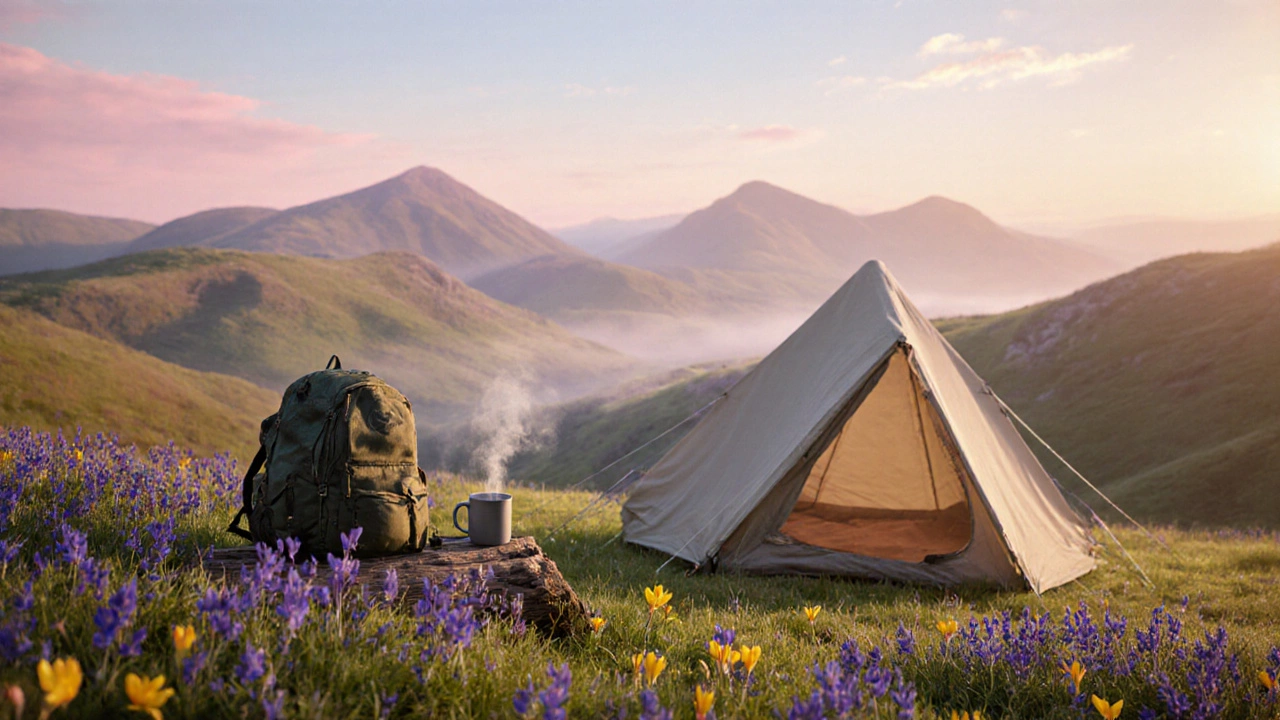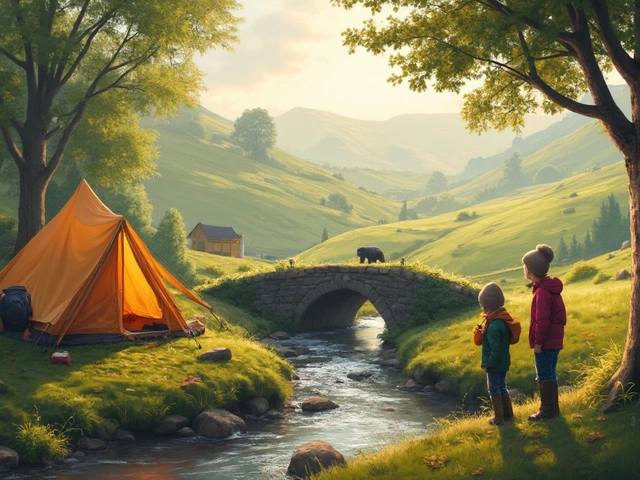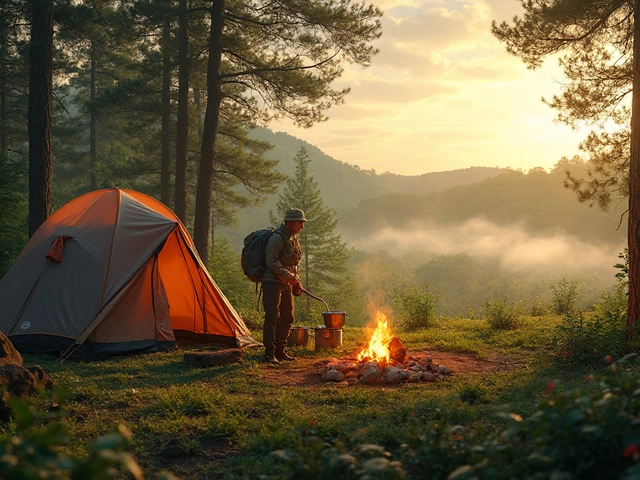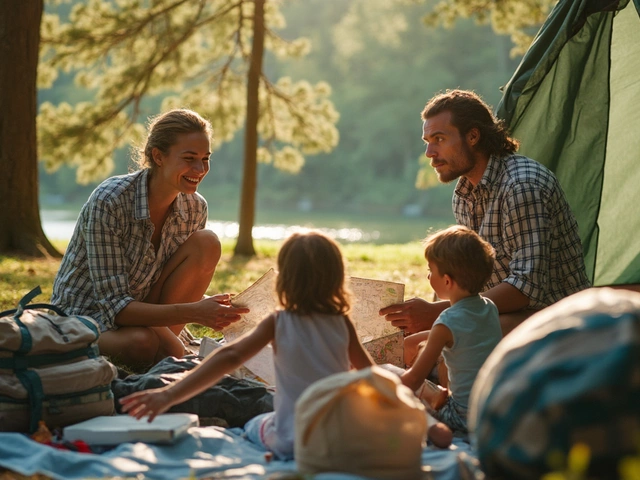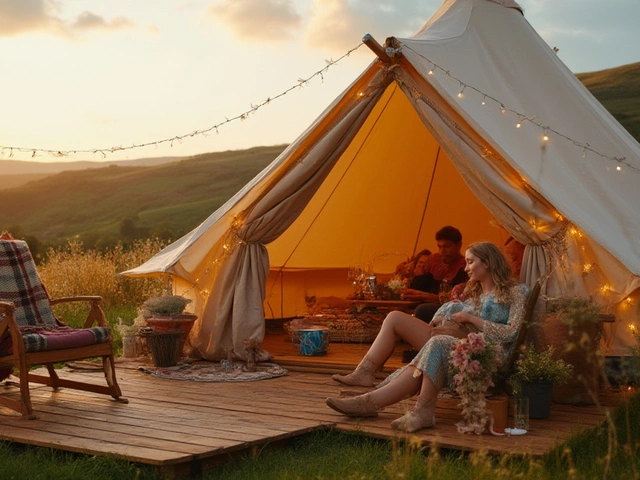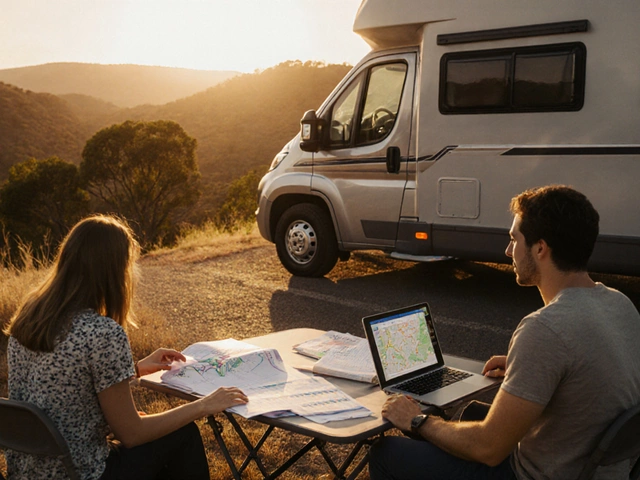UK Camping Season Planner
Spring
8–13°C
Mild weather, blooming landscapes
Summer
18–25°C
Warmest, longest days
Autumn
10–15°C
Stunning foliage, quieter sites
Winter
0–5°C
Magical scenery, low costs
Your Seasonal Camping Guide
Key Takeaways
- Spring (Mar‑May) offers mild weather, blooming landscapes and lower prices.
- Summer (Jun‑Aug) provides the warmest temps and longest days but sees the biggest crowds and highest campsite fees.
- Autumn (Sep‑Nov) combines stunning colour, pleasant weather and quiet sites at a discount.
- Winter (Dec‑Feb) is for the adventurous - short daylight, cold temps, but magical scenery and very low costs.
- Match your camping style (family, solo, wild, glamping) to the season for the best experience.
When you ask yourself "camping UK-what time of year should I go?" you’re really weighing weather, daylight, crowds, cost and the activities you want to do. The UK’s climate is notoriously changeable, yet each season has a distinct character that can make or break a trip. Below we unpack the four seasons, highlight the pros and cons, and give you a practical checklist so you can pick the perfect window for your next outdoor adventure.
Camping in the UK is a pastime that blends natural scenery, historic trails and a wide range of campsite options-from basic wild sites to luxury glamping pods. Whether you’re a first‑timer or a seasoned trekker, knowing when to set up your tent can save you money, hassle and cold showers.
Spring (March-May)
Spring bursts into life across the British Isles. Average daytime temperatures hover between 8‑13°C (46‑55°F), and rainfall begins to ease, especially in southern England. The countryside is a patchwork of wildflowers, and the birds return, making evenings feel fresh and lively.
Why spring works for many campers:
- Lower campsite fees than summer - many parks offer early‑bird discounts.
- Fewer families on the road, so you can enjoy quieter sites.
- Longer daylight than winter - about 12‑14 hours of sun.
- Perfect for hiking, bird‑watching and photographing blooming landscapes.
Watch out for occasional chilly nights, especially in upland areas like the Scottish Highlands or the Lake District. Pack a warm sleeping bag (rated to at least -5°C) and a waterproof jacket.
Summer (June-August)
Summer is the classic camping season. Daytime highs reach 20‑25°C (68‑77°F) in most lowland sites, and sunshine can stretch to 16‑18 hours in the north. This is the time when festivals, open‑air concerts and water‑sports peak, drawing crowds to coastal and lakeside campsites.
Pros of a summer trip:
- Warm, comfortable nights - ideal for sleeping without a sleeping bag.
- Maximum daylight for extended hikes or late‑night barbecues.
- All campsite facilities (showers, cafés, activity centres) operate at full capacity.
Cons to prepare for:
- High demand - book at least 3‑6 months in advance, especially for popular spots like the New Forest or Cornwall.
- Peak prices - expect a 20‑30% increase over off‑season rates.
- Heatwaves can bring sudden thunderstorms; keep a rainfly handy.
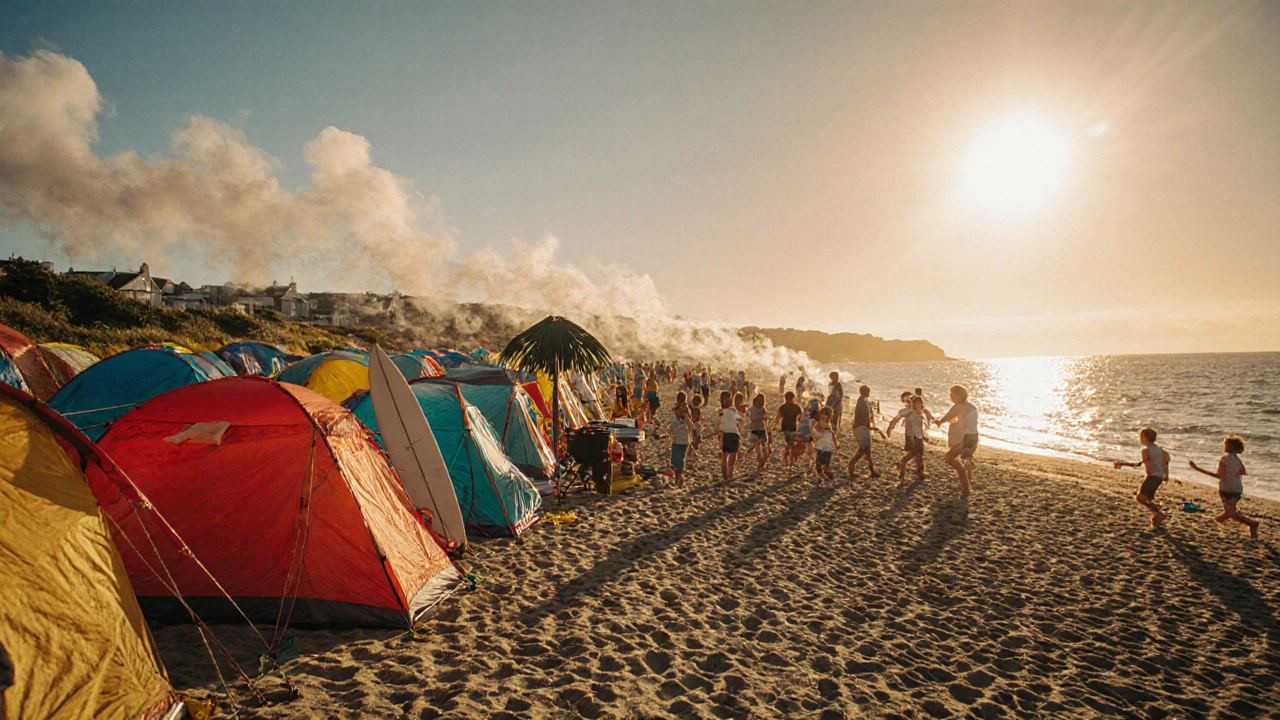
Autumn (September-November)
Autumn paints the UK in gold, amber and crimson. Temperatures dip to 10‑15°C (50‑59°F) early on, then swing down to 5‑10°C (41‑50°F) by November. Rainfall rises again, but the crowds thin out dramatically after school holidays.
Why autumn is a sweet spot:
- Stunning foliage in national parks such as the Peak District, Snowdonia and the Cotswolds.
- Reduced campsite fees - many sites cut prices by up to 40%.
- Cooler days are perfect for long hikes without overheating.
- Long evenings early in the season (around 13‑14 hours) for stargazing.
Gear tip: a good quality insulated sleeping pad and a mid‑weight sleeping bag will keep you comfortable as nights get chillier.
Winter (December-February)
Winter is for the hardy. Daytime temps often sit between 0‑5°C (32‑41°F), with frost and occasional snow in the highlands. Daylight shrinks to 7‑9 hours, but the landscape-especially in places like the Scottish Cairngorms-can be dramatic and peaceful.
Benefits of winter camping:
- Rock‑bottom campsite rates; some parks even offer “stay longer for less” deals.
- Very few tourists - you can claim entire sites to yourself.
- Unique activities like snowshoeing, ice‑fishing and winter wildlife tracking.
Challenges you must plan for:
- Short daylight - plan routes carefully and carry a reliable headlamp.
- Cold and wet - a four‑season tent, insulated sleeping bag (rated -10°C), and layered clothing are essential.
- Some facilities close for the season; verify open sites on the local council’s website.
Factors to Weigh When Picking Your Season
Beyond the calendar, consider these key variables that influence your camping experience:
- Weather patterns: Check historic averages for temperature and rainfall on the Met Office site.
- Daylight hours: More sun means longer hikes; fewer hours demand efficient planning.
- Crowd density: If you crave solitude, aim for shoulder months (May, September).
- Budget: Off‑peak seasons slash fees by up to 50%.
- Planned activities: Water sports thrive in summer; foliage photography shines in autumn.
Season‑Specific Tips & Gear Checklist
Use the checklist below to ensure you’re packed for the conditions you’ll face.
- Spring: Waterproof jacket, insulated sleeping bag, sturdy boots for muddy trails, insect repellent.
- Summer: Sun hat, SPF sunscreen, lightweight sleeping bag or liner, plenty of water, portable fan.
- Autumn: Layered clothing (fleece, thermal base), waterproof tarp for early rain, headlamp with extra batteries.
- Winter: Four‑season tent, sub‑zero sleeping bag, insulated sleeping pad, thermal clothing, hand warmers, stove fuel for hot meals.
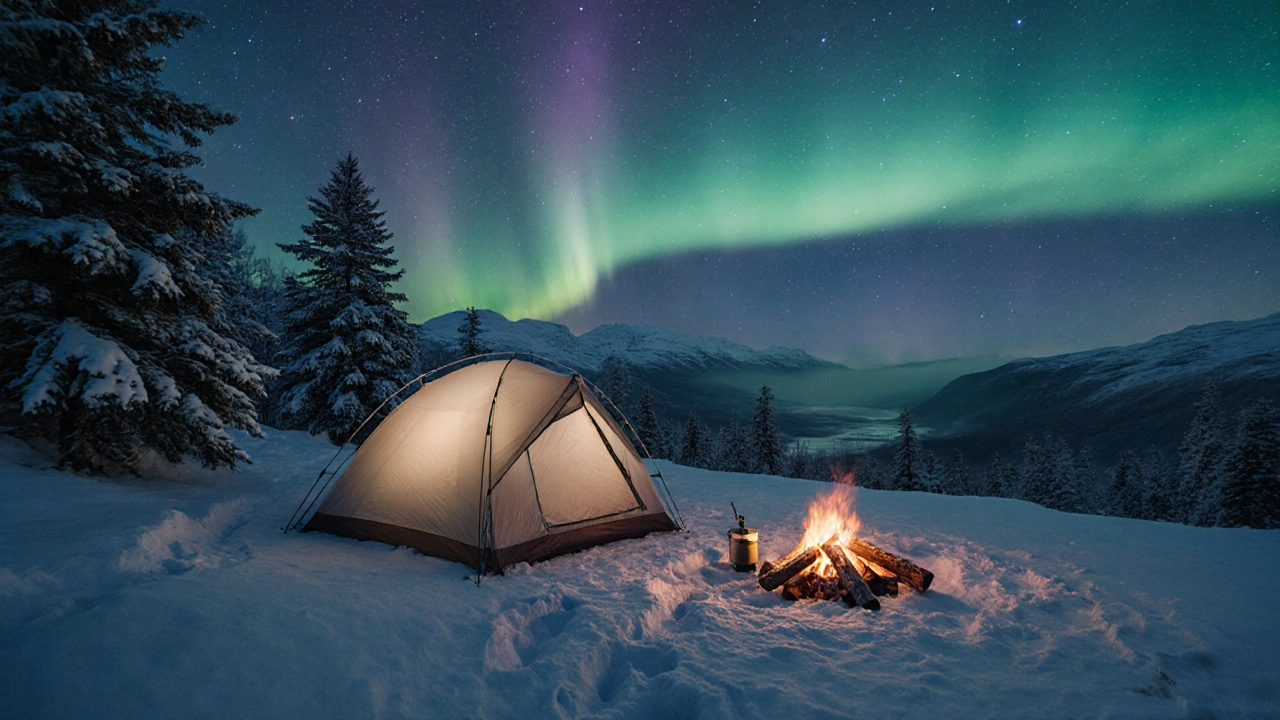
Season Comparison Table
| Season | Avg Temp (°C) | Rainfall (mm) | Crowd Level | Cost | Ideal Activities |
|---|---|---|---|---|---|
| Spring | 8‑13 | 70‑90 | Low‑Medium | Low | Hiking, Bird‑watching, Wildflower photography |
| Summer | 18‑25 | 60‑80 | High | High | Water sports, Cycling, Family BBQs |
| Autumn | 10‑15 | 80‑110 | Medium‑Low | Medium | Foliage walks, Mushroom foraging, Photographic trips |
| Winter | 0‑5 | 90‑120 | Very Low | Very Low | Snowshoeing, Night sky watching, Quiet retreats |
Choosing the Right Region for Your Preferred Season
Each part of the UK shines at different times. Here are quick matches:
- Lake District: Summer hiking, Autumn colours.
- Cornwall coast: Spring wildflower walks, Summer surf.
- Scottish Highlands: Spring blooms, Winter snow‑capped vistas.
- Peak District: Autumn leaf‑peeping, Winter quiet.
- New Forest: Summer family camps, Spring wildlife spotting.
Planning Timeline
- Dec‑Feb: Decide which season suits your goals.
- Feb‑Mar: Research regions, check historic weather data.
- Mar‑Apr: Book campsites (especially for summer or holidays).
- May‑Jun: Assemble gear, test your tent at home.
- One week before: Check forecasts, pack layers, confirm bookings.
Frequently Asked Questions
When is the cheapest time to camp in the UK?
Winter (December‑February) offers the lowest campsite fees, often 40‑60% cheaper than summer rates. Just be prepared for cold weather and shorter daylight.
What season has the longest daylight for hiking?
Summer provides up to 18 hours of daylight in northern England and Scotland, giving you plenty of time for long treks.
Is wild camping allowed year‑round?
Most Scottish hills allow wild camping any time, but England and Wales have stricter rules and recommend the less sensitive months of spring and autumn.
Do I need a four‑season tent for autumn?
A three‑season tent usually suffices for early autumn, but if you plan to camp late November in the mountains, a four‑season model adds safety.
Which UK region is best for family camping in summer?
The NewForest and Cornwall’s coastal campsites have gentle slopes, safe swimming spots, and plenty of family‑friendly activities.
